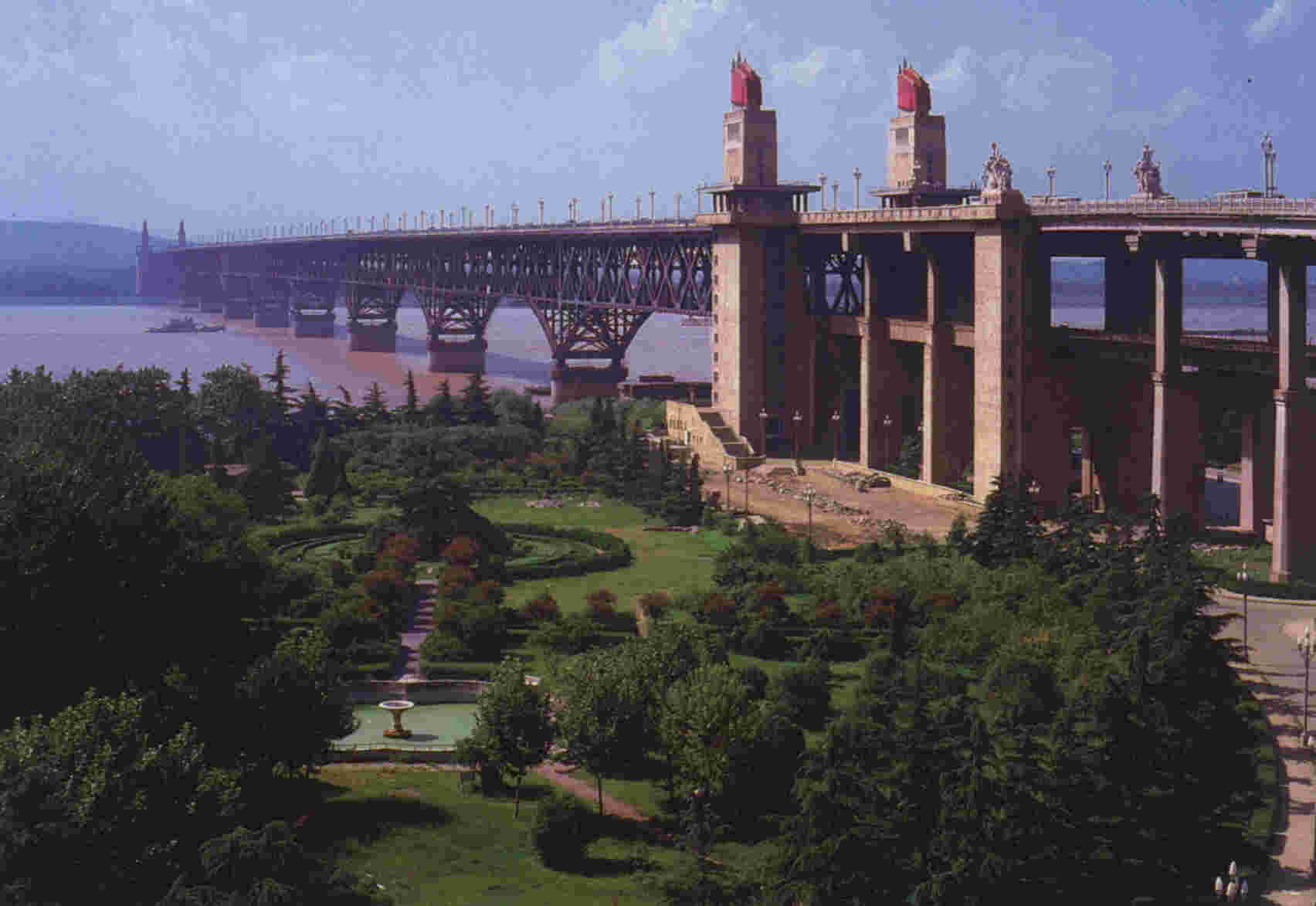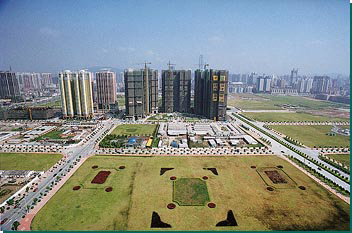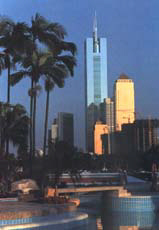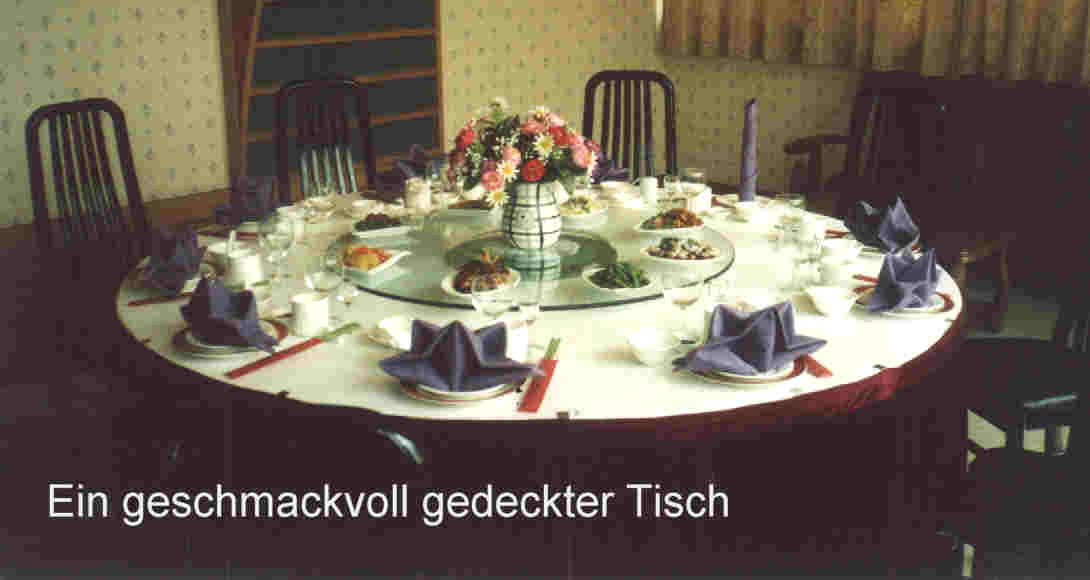 | | Nanjing, Provinz Jiangsu
Guangzhou, Province Guangdong | |  |
 | My first travel this year brought me again to China. My initial destination was Nanjing. I have written about Nanjing quite a lot in one of my last reports and also about the Changjiang-River Bridge. I didn't have a picture of it. Here is it now. |
My second destination which was scheduled was Guangzhou (pronounced Guangjo). Guangzhou is known as one of the "old" cities in China. The 2000 years old city – (It's no miracle, China has a 5000 years old culture) - has changed its appearance totally during recent years and it is still doing it. The opening-up of the country has raised the economy to unbelievable heights in almost all provinces but this development also sees to it that many of the old Chinese buildings are being pulled down and replaced by modern architecture. A foreigner can have the impression that whole China is being digging up. It's a pity. We (Germany) made the same mistake in the 60s, and today we mourn our "history". With the destruction of traditional buildings and centuries-old 'quarters', a lot of tradition and history are being destroyed.
Guangzhou, which accommodates between 3 and 9 million people (There are many different estimates about the population so I chose the easy way), is situated on the Pearl-River Delta in the province of Guangdong. The South-China Sea, Hongkong and Macao form it's boundaries. | 
|
 | Guangzhou is also known internationally as Kanton or Canton. The city came to prominence as a result of the infamous Opium-War. The 2 year-long war started in Guangzhou in 1840. The British Empire wanted to export 20,000 cases of opium despite of a prohibition by the Chinese government. The Chinese Imperial Commissioner confiscated the cases and gave the order to destroy the opium. The trouble which followed was huge.
Guangzhou was the seat of the government of the Nanhai District even in the Qin-era. It was the first coastal city which was opened-up to the outside world.
Some of the attractions in Guangzhou: The Zhentai-Tower, the graves of the Nanyue Kings, the ancestor-temple of the Chen Family, the Liurong Temple, the Dr. Sun Yat-sen Memorial Hall.
Better known in the outside world is Cantonese cooking. Chinese cooking is a little bit unusual for Europeans but also a lot of the Chinese themselves insist that the people from the south eat everything that moves. In general, original Chinese cooking bears no relationship to the meal which is served in Chinese restaurants in Germany. It seems that everything what an animal delivers is prepared as food. Pork tails, chicken feet, duck tongues, snakes, half-brooded eggs and much more can be found on the menu. The fish dish is very delicious (Really!). Besides the well-known fish, is it also possible to eat jellyfish or even sea cucumber. Fish heads seem also to be a special delicacy. |
The freshness of the meal is very surprising too (actually, this is also no miracle). Many restaurants also have a small private zoo. In the entrance area of the restaurants there are many cages, aquariums or plastic boxes in which the animals are stored and will be served later. Much "food" was unknown for me whereas other food thrilled me. A water container teeming with big black water beetles. Very popular.
At another restaurant a cat could be admired. Snake is a very popular dish in China and I can say: "Tastes not bad." The snakes however, have devilishly pointed bones and you must be damn careful. In Guangzhou the snake's blood is also served. I didn't try it. |  |
The service in restaurants is also very unusual for a German. The work is exactly shared. There is a waitress for bringing the meal to the table. Another waitress puts it on the table. A senior employee is responsible only for the order, for the bill and for the direction of the other personnel. There are a lot of people working around you. Green tea is a very traditional drink in China. It is served everywhere. In Restaurants it is almost free of charge. There is also somebody who pays attention that your cup won't ever be empty.
Beer drinkers will be very pleasantly surprised. There are many brands of beer in China. Most of them are not much different in the taste than those found in Germany. A famous brand is "Tsingtao Beer". The brewery was founded at the time of the German Emperor Wilhelm II (Tsingtao was a German colony). The beer is still brewed today in accordance with the German beer law. They are still using the old German brewery equipment it is said. It would be a sin not to drink the local beer. |
 | I was accompanied by my friends Mr. Pan and Ms. Qiao Miao as usual in China. They spared no efforts to make my visit very pleasurable. |
|